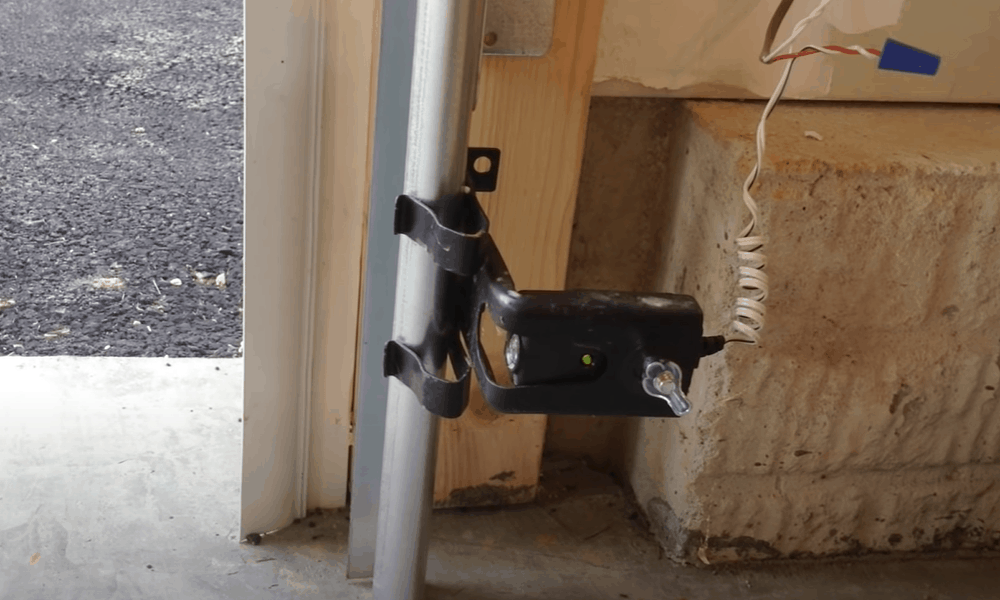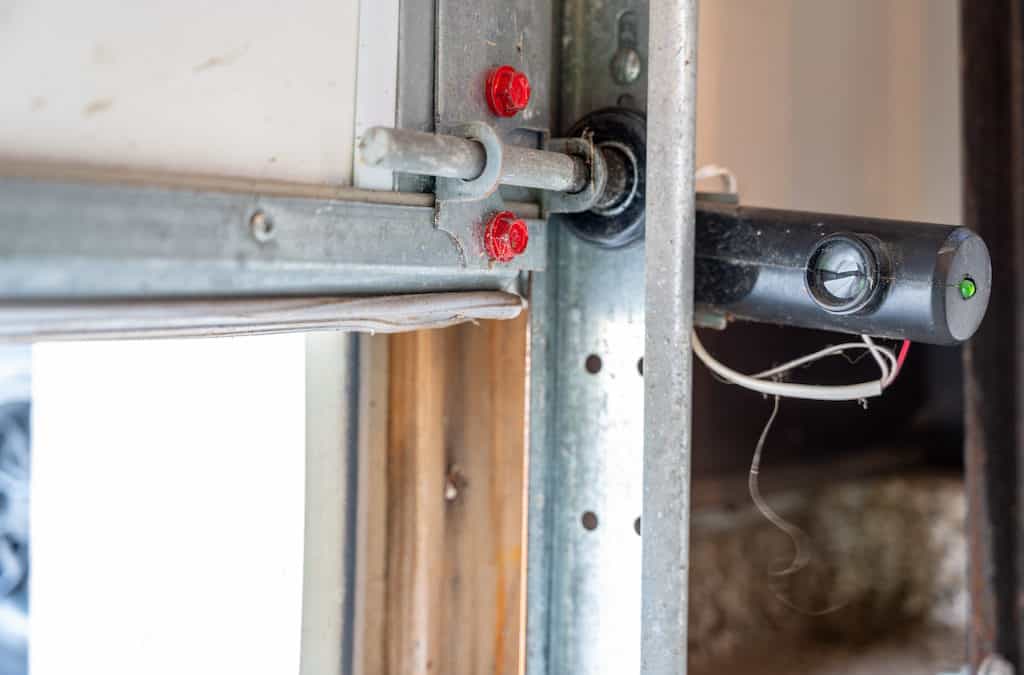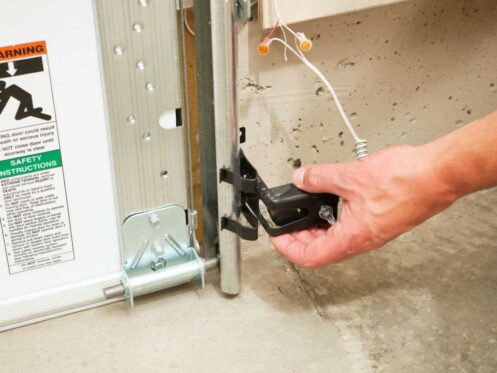Garage door not closing right? The sensors might be to blame. These small but vital devices keep your door safe by detecting obstacles.
If they’re misaligned or dirty, your opener won’t work properly.
This guide walks you through simple steps to troubleshoot and fix garage door sensor issues fast.
How to repair garage door sensor?
To repair a garage door sensor, check for obstructions, realign the sensors, and clean the lenses. If it’s still malfunctioning, replace the sensor or consult a professional.
Key Takeaways
- Garage door sensors are essential for safety, detecting obstacles and preventing the door from closing on objects or people.
- Most sensor issues can be resolved with a few simple troubleshooting steps, such as cleaning or realigning the sensors.
- If sensor issues persist, professional help may be needed for more complex problems.

What is a Garage Door Sensor?
Before diving into the repair process, it’s important to understand the role of garage door sensors.
These sensors are part of the safety mechanism built into automatic garage doors. They consist of two devices: an emitter and a receiver.
The emitter sends an infrared beam to the receiver, which is located on the opposite side of the door.
When the beam is interrupted (by an object or person), the door automatically stops closing or reverses direction.
If one of these sensors becomes misaligned or obstructed, it can prevent the door from operating properly. Understanding the problem can help you diagnose and fix the issue faster.
Common Reasons for Garage Door Sensor Malfunctions
Before attempting any repairs, it’s important to identify the potential causes of your garage door sensor issues. Here are the most common reasons why garage door sensors may malfunction:
Misalignment: One of the most frequent issues with garage door sensors is misalignment. If the sensors are out of alignment, they may not be able to detect the infrared beam properly, causing the door to reverse or fail to close.
Obstructions: Objects like dirt, dust, or debris can obstruct the sensors, blocking the infrared beam and preventing the door from functioning as it should.
Wiring Issues: Loose, damaged, or disconnected wires can cause sensors to stop working, as the electrical signals may not reach the sensor properly.
Sensor Malfunction: Over time, the sensors themselves may experience internal malfunctions due to wear and tear, or electrical problems. In such cases, the sensor may need to be replaced.

Step-by-Step Guide to Repairing a Garage Door Sensor
If you’re experiencing issues with your garage door sensors, follow these steps to troubleshoot and repair the problem.
You’ll need a few basic tools for the job, including a step ladder, a screwdriver, and a cloth.
Check the Sensor Alignment
Step 1: Locate the two sensors at the base of your garage door. One sensor will be the emitter, and the other will be the receiver.
The sensors should be positioned facing each other at the same height.
Step 2: Stand directly in front of the sensors and check if the infrared beam is being blocked.
If the sensors are misaligned, the beam will be interrupted, causing the door to reverse or not close.
Step 3: If the sensors are misaligned, gently adjust them so they face each other directly. Use a level to ensure they are positioned correctly.
Step 4: Tighten any screws that hold the sensors in place. You can also gently move the sensors to ensure they are aligned properly.
Clean the Sensors
Dirt, dust, and debris on the sensor lenses can obstruct the infrared beam. Cleaning the sensors is a quick and easy solution to fix this problem.
Step 1: Use a clean, dry cloth to wipe the lenses of both the emitter and receiver sensors. Be sure to remove any dirt or debris that could be blocking the lens.
Step 2: Avoid using harsh chemicals that could damage the lens or coating. If necessary, you can use a mild cleaning solution or a soft brush to remove stubborn dirt.
Inspect the Wiring
If the sensors are aligned and clean but still not working, the issue may lie with the wiring.
Step 1: Turn off the power to the garage door opener by unplugging it from the outlet or turning off the circuit breaker.
Step 2: Check the wires connected to the sensors to ensure they are secure. Look for any loose, frayed, or damaged wires.
Step 3: If you notice any issues with the wiring, you may need to repair or replace the damaged wire.
You can use wire strippers to remove the damaged section and use electrical tape or a wire nut to connect the wires.
Test the Sensors
Once you have aligned, cleaned, and inspected the sensors, it’s time to test them to make sure they are functioning correctly.
Step 1: Plug the garage door opener back in and test the sensors by closing the door.
Step 2: If the sensors are working properly, the door should close without reversing. If it still reverses or won’t close, continue troubleshooting by checking for other issues.
Frequently Asked Questions
1. How do I know if my garage door sensors are misaligned?
You can check the alignment by standing directly in front of the sensors. If the sensors are not facing each other or if the infrared beam is interrupted, the door will not function properly.
2. Can I repair garage door sensors myself?
Yes, many garage door sensor issues can be fixed by realigning or cleaning the sensors. However, if there’s an issue with the wiring or a malfunction in the sensor, it may be best to call a professional.
3. How much does it cost to replace garage door sensors?
The cost of replacing garage door sensors can range from $50 to $200, depending on the make and model of your door. Professional installation may add to the total cost.
Conclusion
Garage door sensors play a vital role in keeping your door functioning safely and efficiently. If your sensors are malfunctioning, follow the steps outlined in this guide to troubleshoot the issue.
From cleaning and realigning the sensors to inspecting wiring or replacing the sensors entirely, most problems can be solved with a bit of DIY work.
However, if you’re not comfortable handling electrical issues or if the problem persists, don’t hesitate to call a professional. For reliable broken garage door repair in Virgil IL, expert help ensures your garage door works properly and safely.

